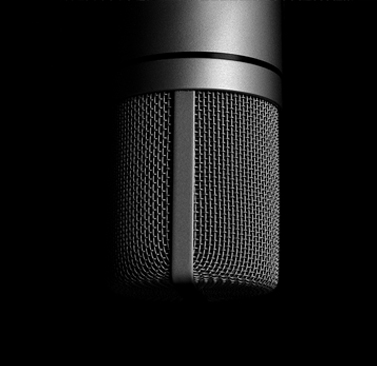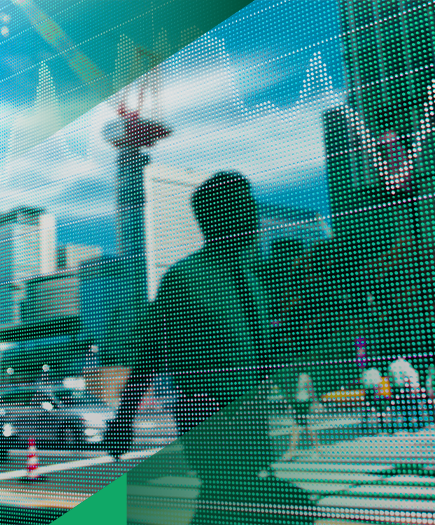Treasurers’ Conference – SA Economic Outlook: Is there light at the end of the tunnel

Related links
No related linksArticle highlights
- Exports and consumer spending will continue to drive the recovery as will the restocking of inventories by companies
- This will be contained by stagnant consumer spending and weak fixed investment
- This will result in weak GDP growth of 4.4% this year and 2% in 2022, 1.4% in 2023 and 0.8% in 2024
Nicky Weimar, Nedbank’s Chief Economist, provides an overview of the state of the economy and why exports and the consumer are likely to remain the key drivers of economic growth for the foreseeable future.
SA has started to climb out of its lockdown-induced pit
The easing of lockdown restrictions saw a rebound in economic activity, which helped to slow the rate of decline in GDP from 17.8% in Q2 2020 to 6.2% in Q3 2020 down to 4.1% in Q4 20. We believe that the economy probably grew at an annualised rate of about 2% quarter on quarter in Q1, which slowed the year-on-year contraction in GDP even further to 3.2%. The rebound has been driven by continued government support, which provided relief to households and companies. The big lift to the economy was from the strong rebound in exports, which provided significant momentum, and a moderate recovery in consumer spending.
The bad news is that the economic shutdown knocked the economy into a deep pit, and we now face a steep upward climb to get back to 2109 levels. Fixed investment activity remains weak and is showing no signs of recovery. The recovery we have seen so far has been uneven among income groups and industries.
Where to from here?
Provided we can avoid the madness of Level 4 and 5 lockdown, the current Covid wave and future waves will dampen the recovery and limit the upside, but won’t stop the recovery in its tracks or reverse the gains we have made. As South Africa starts to gain some momentum with regard to vaccines, the impact of Covid will become less severe. Government’s finances are too fragile and stretched for them to provide any assistance to the economy. It has a massive budget deficit and a mountain of debt (80% of GDP). The bounce in tax revenue towards the end of the fiscal year will result in a smaller budget deficit, but the reality is that it will still be over 10% of GDP and we will live with a budget deficit well in excess of 3% of GDP for several years to come. The demands for funding from SOEs is more likely to increase than reduce. If you add the debt of SOEs to our gross government debt, we have a debt burden of over 100% of GDP. The only route to fiscal stability is for government to cut spending. Another source of weakness is fixed investment, which took a big hit in 2020 and has barely recovered. SOEs are in deep financial trouble and don’t have the cash flow, balance sheets, skills or the capacity to drive capital expenditure and will impact the private sector’s ability to expand their operations. SOEs are the key to unlocking stronger fixed investment for the private sector going forward.
Electricity shortages are the greatest constraint on fixed investment
Unless we solve the electricity crisis and fix SOEs, private sector fixed investment cannot recover. We also need to improve the investment environment. The government has a lot of work to do to resolve corruption in their own ranks, make better policy choices and deal with the mountain of legislation that deters fixed investment. Government has a big job to do to restore confidence in the economy and restore a working state. Government spending and fixed investment will be a drag on the economy for some time to come.
Exports surged to even higher ground in Q1
We have two major sources of demand left – exports and consumer spending. Exports performed incredibly well over the last three quarter, recording a trade surplus of over R100bn in Q1 2021. We believe that exports will be the key driver of growth in the years ahead based on a strong economic rebound in the global economy with many countries already back to pre-2019 levels. The vaccines have allowed economies to open and more industries to operate at a normal level, offering the promise of ending the pandemic. Another factor that will support global growth is a highly accommodative monetary policy. In advanced countries, interest rates are still near zero, and they are still undertaking aggressive QE. This is very supportive of growth going forward and provides some space for EM as well who will be able to keep their interest rates low for longer.
Many advanced countries extended their unprecedented fiscal support of 2020 into 2021
Fiscal policy is highly stimulatory at the moment. We’ve seen additional fiscal stimulus being announced with a shift from emergency support to infrastructure investment to accelerate the transition to green energy and sustainable infrastructure. The IMF expects a strong rebound in 2021 & 2022, led by the US and China, followed by a return to trend. The IMF is looking for global growth of 6% in 2021 while the OECD is looking for growth of 5.8% with the momentum coming predominantly from China.
Commodity prices are rallying, boosted by the bounce in global demand & hopes of a global infrastructure drive
The speed and the nature of the global recovery is supportive of commodities, leading to the massive rally in commodity prices, which is very encouraging. There’s a strong possibility that we might see some correction in the months ahead but believe that the infrastructure investment programmes that have been announced by advanced countries will get implemented and result in generally higher commodity prices over the next couple of years. The world environment is very supportive of our exports and believe there will be a stronger demand for SA exports and we will earn a higher price for them. Exports will be the key driver of growth in the years ahead. One of the key risks is that all the stimulus and lockdown disruptions could fuel inflation. Most companies are experiencing that input costs are rising rapidly. In advanced countries, this can be passed onto the consumer. Investors believe the current stimulus is excessive and will lead to inflation remaining above the Fed’s target of 2% and will force the US Federal Reserve to start tapering bond purchases. The Fed believes that the rise in inflation is temporary and is being cause by supply side disruption and lockdown. They also don’t believe inflation is permanent because there’s a lot of slack in the system. They point to the unemployment rate in the US of 6.1% as being far from the 3.5% that prevailed prior to lockdown.
Any tightening would feel & look a lot like 2013
If the US Fed were forced to start normalising their monetary policy by tapering bond buying and raising interest rates, it would look a lot like 2013. Stock markets are looking pricey, so this could result in a correction of stock prices, rising bond yields, a cool off in global house prices and a stronger USD. The vulnerable parties in advanced countries would be firms and governments that are highly indebted, but they will survive if growth continues. EM are the vulnerable parties. They’ll see capital outflows, weakening currencies, rising inflation and will be forced to hike interest rates more than normal. This could result in multiple debt crises and is a risk we need to be aware of although we don’t think it’s going to undermine our growth prospects right now.
A moderate recovery in consumer spending is underway
The consumer is our final source of growth. Consumer spending will start to pick up and accelerate during this and next year and carry the economy to a stronger place. Wholesale sales are back to 2019 levels. Retail sales are close to that and new vehicle sales are above 2019 levels. The problem with the consumer is that the fundamentals that drive spending aren’t convincing. Employment has dipped and is well off 2019 levels. Employee compensation has increased, but not by much. This means that the recovery we’ve seen in consumer spending so far has been driven by people working remotely, lower expenses and a sharp fall in inflation, which has increased the purchasing power of households and low interest rates. Low interest rates have reduced the costs of existing debt and freed up income for either discretionary spending or savings. SA households became net savers in 2020, which is unheard of. There is a stash of savings so, if confidence improved, they could divert these savings into spending.
The consumer is a bit of a puzzle right now
We are not very optimistic about the prospects for earnings going forward. We think earnings prospects for households are limited, wages will be under pressure and employment will recover slowly. This will not convince consumers to divert their savings to spending. Two factors will and that is low inflation and low interest rates. Our consumer inflation went to 4.4% in April and our producer inflation, similar to the US, jumped to 6%. These numbers are heavily distorted by the low base that prevailed in 2020. There is inflationary pressure building up in the system, but the sources of inflation in SA are almost completely external. We don’t believe it’s going to run away because there are certain counter balancing forces at play. One is the very strong Rand, which has pulled back to pre-pandemic levels and has remained resilient and strong. But, we can’t rely on a strong Rand as a policy to contain inflation. The factors that determine the value of the Rand are themselves highly volatile. The Rand is predominantly driven by global investors’ risk appetites in general and their risk appetite for EM assets and risk appetite is very unpredictable. The other reason we can’t count on the Rand is because at current levels, it is very close to fairly valued. If you use inflation differentials purely to determine the valuation for the Rand, it is slightly overvalued. Even if the Rand were to weaken, the pass through to inflation is weak because there is little to no demand pressure on prices. Weak demand has contained inflation. The SARB expects the negative output gap to narrow as the economy recovers but will still be in place by 2023 and that interest rates need to go up in order to ensure inflation remains at the 4.5% midpoint of their target range. The SARB sees interest rates going up in Q3 and the Repo rate going to 6.1% by 2023. This is still below the 6.5% Repo rate pre-Covid. Our view is that it will hurt the consumer so think rates will remain unchanged this year and go up 100bps in 2022 and remain flat for an extended period of time. Interest rates will then continue to favour consumer spending.





